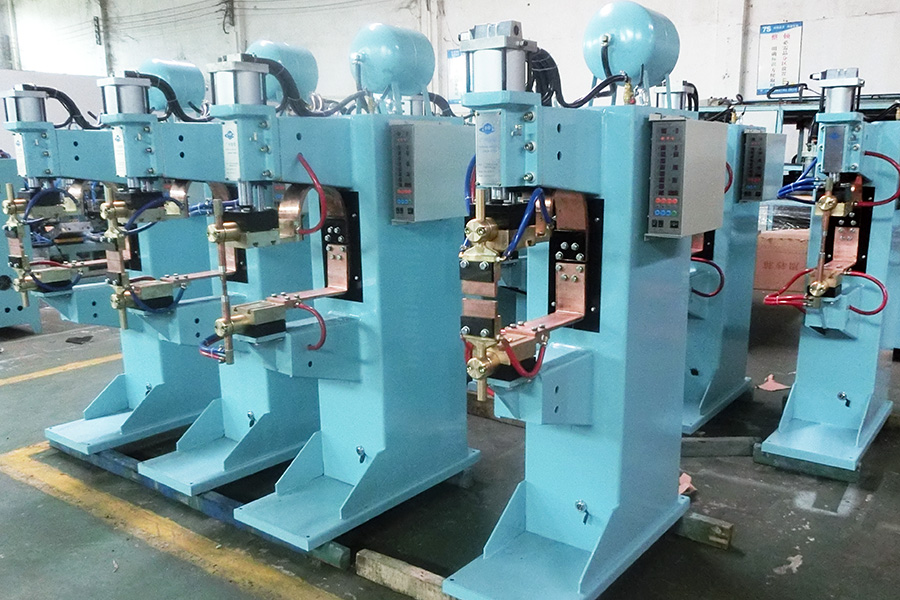Resistance welding is a process by which metals can be joined together by applying pressure and conducting a strong electric current through the metal combination to heat up the welding joint and melt the metals. It has various forms and applications, such as spot, seam, projection, butt and flash welding. In this introduction, I will explain the basic principle, types, advantages and disadvantages of resistance welding.
The basic principle of resistance welding is that heat is generated by the resistance offered by the workpieces for the flow of electric current through them. The heat is sufficient enough to fuse the metal at the point where they join – the point of ‘resistance’ between the faying surfaces. A force is applied before, during and after a current is applied, which confines the contact area and helps to form a weld nugget at the point where it solidifies.
There are many types of resistance welding, each with its own specific application and characteristics. Some of the common types are:
- Spot welding: This is one of the oldest and simplest forms of resistance welding, in which a weld nugget is produced by passing an electric current between the two metal components while they are held together between electrodes, typically made from copper-based alloys. Spot welding is widely used in the automotive and aerospace industries for joining steel and aluminium alloys.
- Seam welding: This is a variation of spot welding, in which a series of overlapping nuggets is produced by replacing the conventional spot welding electrodes with wheels, which turn as the parts are fed between them. The process produces a continuous welded seam rather than a single spot. Seam welding is often used in the production of thin sheet, leak-tight containers such as fuel tanks.
- Projection welding: This is a form of resistance welding where the electricity, force, and weld time are concentrated on raised ‘projections’ across the surface. Projection welding is generally used for welds using thicker materials than the thinner metal pieces that spot welding is usually required for, and often not metals. It is used primarily in the electrical, automotive and construction industries.
- Butt welding: This is a process in which the two components of similar cross section can be joined together in one operation that takes place simultaneously across the entirety of the affected object, rather than just in small spots. Butt welding is used for joining rods, tubes, wires and other similar parts.
- Flash welding: This is a process in which the two components are brought into contact under a light pressure and then a high current is passed, causing the metal to heat up and flash. The flashing action removes any oxide or impurity layers from the surfaces, and then a heavy force is applied to forge the parts together. Flash welding is used for joining complex shapes and dissimilar metals.
Some of the advantages of resistance welding are:
- It is a fast, efficient and pollution-free welding process.
- It does not require any filler material, flux or shielding gas, which reduces the cost and complexity of the process.
- It produces consistent and high-quality welds with good mechanical and metallurgical properties.
- It can be easily automated and integrated with other manufacturing processes.
Some of the disadvantages of resistance welding are:
- It is limited by the material thickness and electrical conductivity of the workpieces.
- It requires high initial investment and maintenance costs for the equipment and electrodes.
- It may cause distortion, cracking, spatter and electrode wear due to the high heat and pressure involved.
- It may not be suitable for welding some materials, such as high-strength steels, titanium and magnesium alloys, due to their high melting points and low electrical resistivity.

